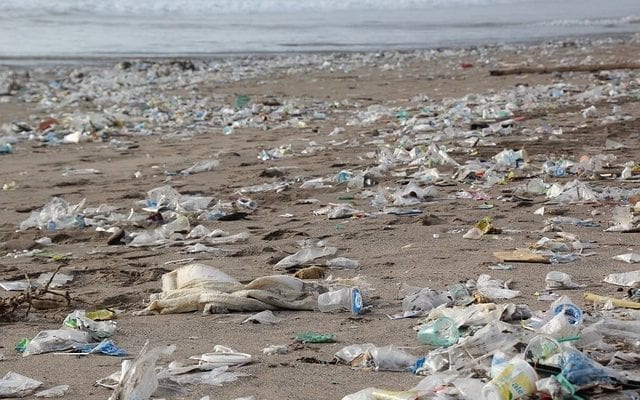
News
Great Pacific Garbage Patch Cleanup Fails off the San Francisco Coast
A floating barrier launched off the coast of San Francisco to aid in removing plastic debris from the ocean has reportedly failed. The $20 million project was launched in the effort to clean up a massive island of trash, plastic, and harmful debris between California and Hawaii.
Ocean Cleanup, the organization behind the plastic catching barrier, reported that the U-shaped device was successfully scooping up the plastic, but was found to be incapable of keeping the debris inside its net. The device, called the Ocean Cleanup System 001, is 2,000 feet long with a 10-foot skirt that hangs below it. Launched in October, the initial goal was to have cleaned up half of the Pacific Garbage Patch within five years.
The organization said, “It appears that the system occasionally travels slower than the plastic, which provides the caught plastic with the opportunity to leave the system again.” For the next few weeks, a crew of engineers will be working to widen the span of the barrier to help it catch more wind and help it go faster.
Challenges mount as 24-year-old @BoyanSlat launched the world's biggest ocean plastic cleanup. But he's not giving up ♻️ pic.twitter.com/H9tD7HzaJW
— Bloomberg Originals (@bbgoriginals) December 18, 2018
A statement released by Ocean Cleanup said, “Eventually the only way to truly see how the system would perform was to put it in the environment it has been designed for, and this application has been largely effective, since most of the design has withstood the tests of the Pacific, such as its ability to accumulate plastic, reorient with the wind and survivability. For the beta phase of a technology, this is already a success.”
According to Ocean Cleanup founder Boyan Slat, the Great Pacific Garbage Patch is nearly double the size of Texas, and contains an estimated 1.8 trillion pieces of plastic, weighing 80,000 metric tons. Researchers have found that half of the garbage patch is comprised of large discarded pieces of trash, including discarded fishing nets, bottles, plates, buoys, rope, and used hygienic supplies. The other half is comprised of “microplastics” measuring less than 0.2 inches, making it difficult to remove from the water.
Plastic pollution is extremely deadly to marine life, with larger pieces entangle and killing creatures. Microplastics can be ingested by small fish, causing health problems which are eventually moved along the food chain to larger organisms. It is estimated that by 2050, there will be more plastic waste in the ocean than there is marine life.


1 Comment